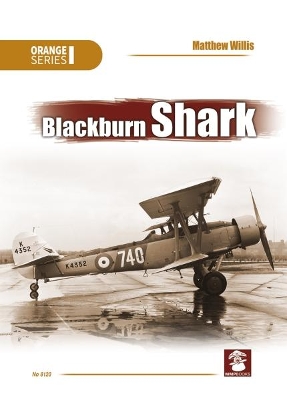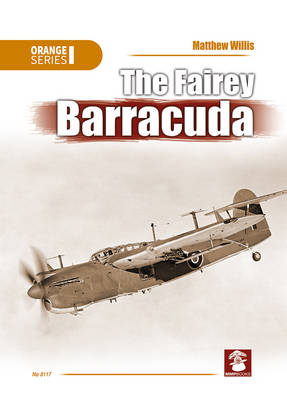Orange
1 primary work • 3 total works
Book 8120
The Blackburn Shark torpedo/spotter/reconnaissance biplane was overshadowed by its competitor the Fairey Swordfish. In reality though, the Shark was more modern than the Swordfish and performed better, and had it not been bedevilled with engine trouble in its early service, might have gone on to great things.
As it was, the Shark contributed greatly to the Royal Navy's preparation for war in the late 1930s, and performed valuable service for the Fleet Air Arm and Royal Canadian Air Force during WWII.
This is the first book devoted to the Shark to cover all of its service with every operator, and features nearly 100 photographs including many never seen before and detailed manufacturer images from the BAE Systems Heritage archive. Written by naval aviation historian Matthew Willis, featuring scale plans based on manufacturer drawings and artwork by British illustrator Chris Sandham-Bailey, this title offers the most comprehensive historical and technical study of the Shark yet published.
As it was, the Shark contributed greatly to the Royal Navy's preparation for war in the late 1930s, and performed valuable service for the Fleet Air Arm and Royal Canadian Air Force during WWII.
This is the first book devoted to the Shark to cover all of its service with every operator, and features nearly 100 photographs including many never seen before and detailed manufacturer images from the BAE Systems Heritage archive. Written by naval aviation historian Matthew Willis, featuring scale plans based on manufacturer drawings and artwork by British illustrator Chris Sandham-Bailey, this title offers the most comprehensive historical and technical study of the Shark yet published.
The Fairey Flycatcher was the archetypal between-the-wars Fleet Air Arm fighter. This idiosyncratic biplane was loved by crews and the public alike, despite its unlikely appearance and moderate performance. It was famed more for its aerobatic prowess and public demonstrations than glory on the field of battle. The Flycatcher was agile yet forgiving, tough, reliable, and fully aerobatic. Bedecked in a dazzling range of colourful markings, it was the perfect mount for the young naval pilots of the 1920s and 30s. The Flycatcher was never engaged in a war, though it played a significant role in 'colonial policing' of trouble spots in the British Empire and served the Royal Navy doing everything from tackling pirates off the Chinese coast to entertaining crowds at Schneider Trophy events with aerobatic displays. This book is the most comprehensive on the Flycatcher yet published. It features numerous photographs of the aircraft in service (several of which have never been published before), walkaround photographs of the replica built by John Fairey, illustrations from contemporary manuals, and colour artwork.
The Fairey Barracuda was the first monoplane torpedo bomber operated by the Royal Navy's Fleet Air Arm. The Barracuda experienced a difficult birth and development during the Second World War, and this, added to a number of fatal crashes, led to a poor reputation, which the aircraft would never truly shake off. Despite this, the Barracuda proved highly successful in service, carrying out raids against the Tirpitz, and against Japanese forces in the East Indies that contributed greatly to the war effort. It also undertook a variety of less well-known roles, and remained in Fleet Air Arm service into the 1950s. This new book by naval aviation historian Matthew Willis contains an extensive history and technical description of the Barracuda, drawing from a wide range of archive materials and accounts from the men who flew and operated the aircraft in service, together with over 100 photographs, many never before published. Illustrated with 100 rare b+w photographs; scale plans and colour profiles also included.


